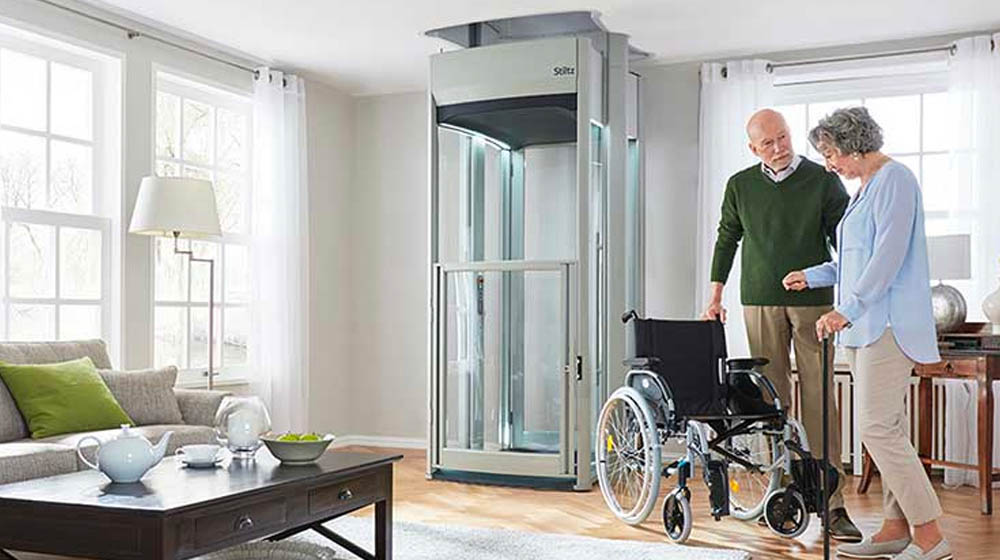A home elevator can be a great investment. It can make your home more accessible for someone who is disabled or aging in place. But just like any major appliance, a home elevator experiences wear and tear as well as system failures over time. It is important to be mindful of maintenance requirements to keep your elevator in safe working order and save you money on unnecessary repairs.
Regularly-Scheduled Home Elevator Maintenance and Inspections
Some maintenance is best done by the professionals. Schedule annual routine maintenance with your local elevator repair company to keep your elevator in safe working order. Elevator maintenance companies typically take care of issues like:
- Safety testing
- Inspections
- Routine maintenance
- Factory-authorized repairs (including those due to a recall or update)
Some states have laws mandating inspection schedules for home elevators. For example, New York requires annual inspections whereas Massachusetts residents must have their elevators inspected every five years. Even if your area doesn’t stipulate an inspection requirement, you should plan a reasonable inspection schedule for your own safety.
States requiring inspections often stipulate who must perform the inspection (such as the state’s department of inspections or a contracted inspection agency), and many of them also charge an inspection fee payable to the state.
Updating Your Home Elevator
Most home elevators will last for a total of 20 to 30 years before they need to be completely replaced, but in the meantime, you may need to hire an elevator repair company to perform updates. Generally, if your home elevator is five or more years old, it may be in need of updates to keep it running reliably.
-
Aesthetic updates: If you just want to update the appearance of your elevator, you can call the manufacturer to find out what parts are available that are compatible with your model. Many people opt for new railings and fixtures to give their elevator an upgrade to match the decor in their home. It costs around $300 to update the fixtures. Other people like the look of more old-fashioned elevators.
-
Replacing the control system or motor: If your elevator’s computerized control system or motor is beyond repair, you should consider replacing it. Before you decide, look into the cost of replacing the whole thing. It costs $8,000 to $10,000 to replace the control system and $10,000 to $15,000 to replace the motor, compared with $10,000 to $50,000 to replace the entire elevator. Depending on your specific elevator make and model, it might be a better financial choice to just replace the whole thing.
Common Home Elevator Repairs
Just like any major appliance, your elevator will eventually experience certain problems. Some of the most common complaints include the door jamming or not closing, the elevator getting stuck between floors, strange noises from the shaft, a bumpy or slow ride, or unusually high rates of energy use. All of these issues require a service call to figure out the cause and fix the problem.
Most home elevators cost about $450 a year in repairs and maintenance, but these costs depend on several factors. The first factor is how many floors the elevator serves; the more floors, the more expensive. Costs also vary depending on whether the door is electric or manual, as electrical repairs tend to be more pricey. It also depends on whether the system is hydraulic, pneumatic, or vacuum-driven, with hydraulic being the most expensive to repair.
Common repairs include:
- Malfunctioning doors
- Hydraulic fuel line
- Piston failure
- Cables and wiring in the cab
- Electrical problems
If you are faced with a high repair estimate, consider whether you need the elevator for accessibility and safety in your home. The elevator might also increase your home’s resale value. Depending on these factors, even a pricey repair bill may be worth it.
Do-It-Yourself Home Elevator Repairs
For the most part, repairing and maintaining your elevator yourself is not recommended. In many cases, tinkering with the electrical wiring or computer mainframe can void your manufacturer’s warranty. Plus, it can just be dangerous messing with home elevator components if you aren’t familiar with how they work.
There are a few things you can do to troubleshoot a malfunctioning elevator, while you wait for the repair company to service the elevator.
- Check your circuit breaker. The elevator may have simply lost power.
- Check the battery backup. Some newer elevators have backup batteries in case of power outages or electrical malfunctions. Check to see if the batteries are new and in working condition.
- Check for doorway obstructions. There could be something in the door track keeping it from opening or closing properly. This includes the inner and outer elevator doors.
- Look for a reset switch. Some elevator models have a built-in switch to reset all the factory settings and restore power.
Bottom Line
Home elevator maintenance can be pricey but you’ll have peace of mind knowing the elevator you rely on is in safe working order. To find a maintenance company in your area, try contacting your elevator’s manufacturer for their recommendations or search online for highly-rated elevator service companies in your city.


